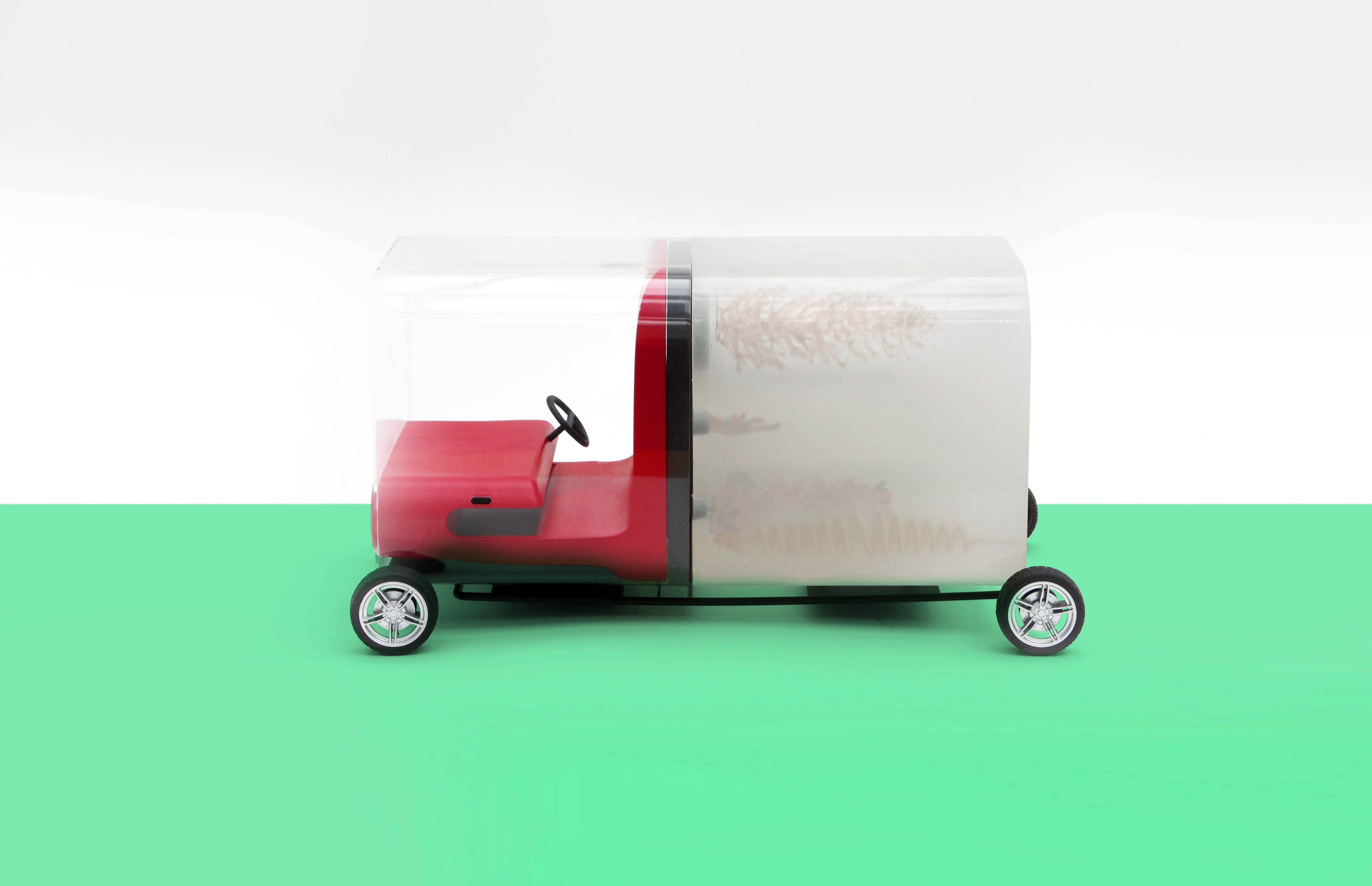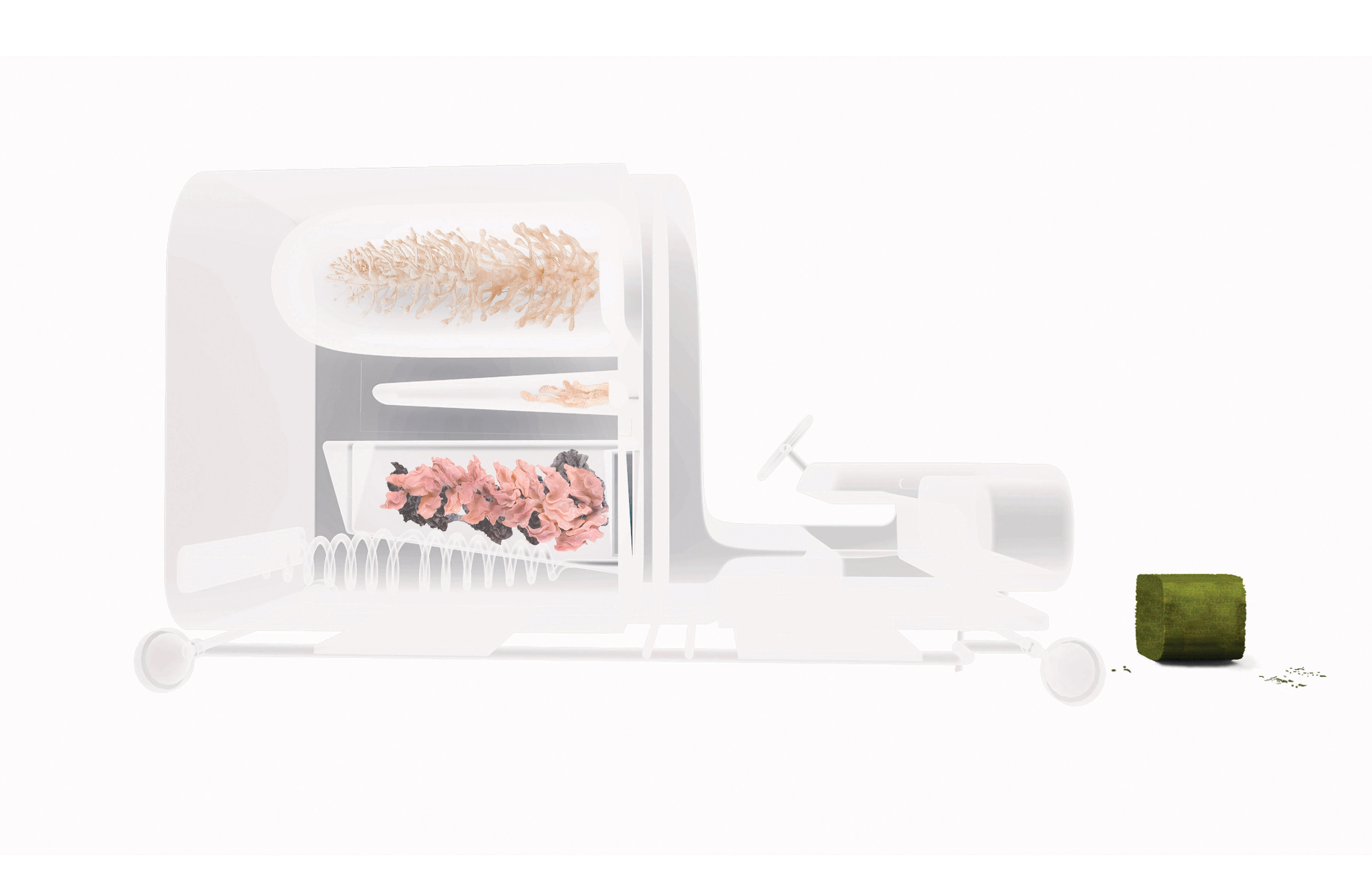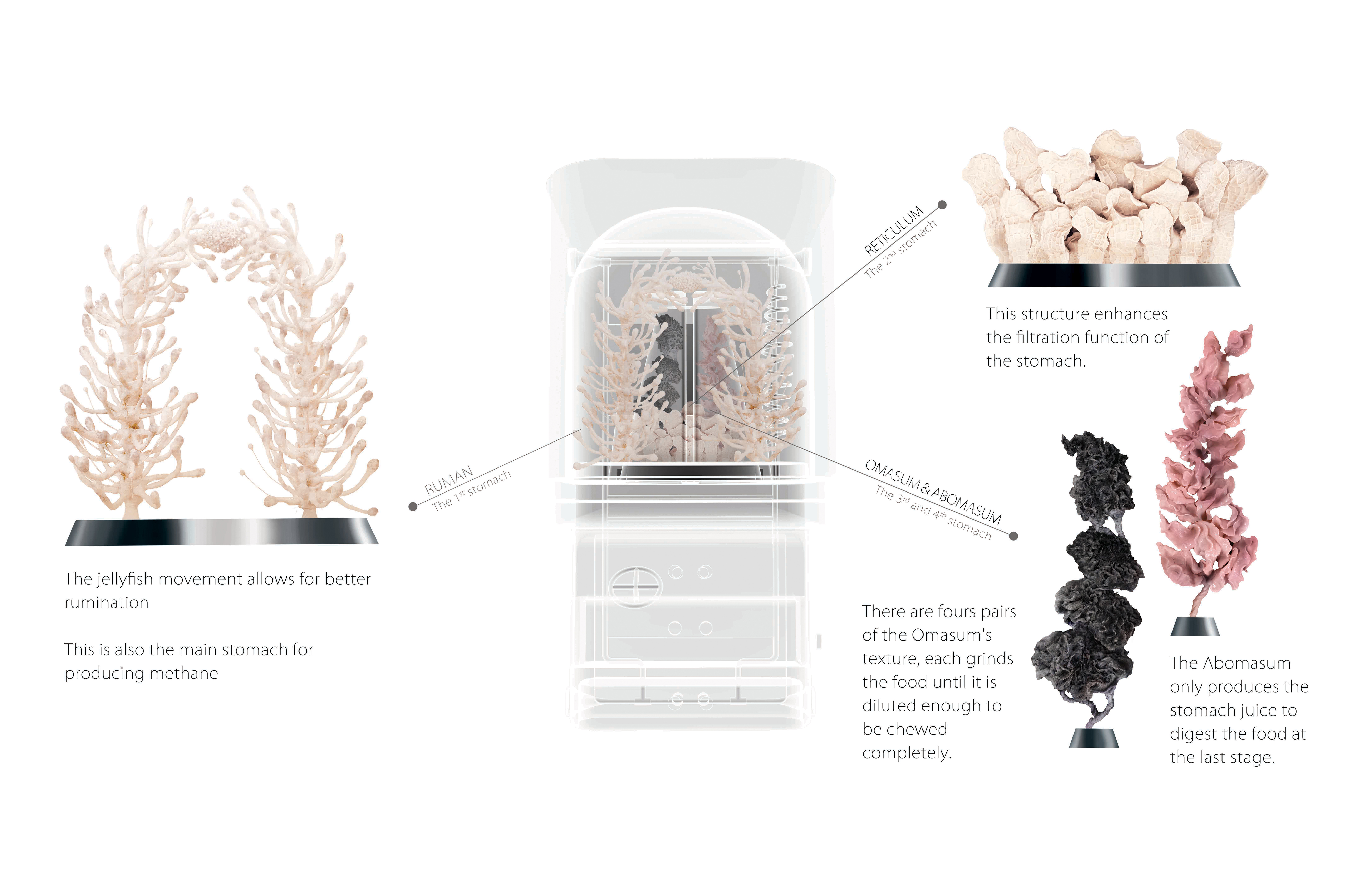A concept car powered by a cow stomach
The Digestive Car proposes that the vehicles of the future will be run on 3D bioprinted cow stomachs


The Digestive Car proposes that the vehicles of the future will be run on 3D bio-printed cow stomachs
With global warming becoming ever more apparent, it seems that everything we do will need to change in order to protect our future. Design student Yi-Wen Tseng has devised a way of using one problem pollutant – cows – to solve another – cars. Thought to be one of the primary culprits in climate change, the world’s 1.5 billion cattle are responsible for 18% of the harmful greenhouse gases released into our environment – more than all forms of transport combined.
Short of getting rid of cows altogether there is little that can be done, but Tseng proposes that we kill two birds with one stone and use the methane produced by cows to replace the fossil fuels that power our cars. The Digestive Car not only harnesses the fuel potential of methane, but it actually produces it itself – incorporating augmented bio-printed cow stomachs into the vehicle’s body, and requiring nothing more than grass as a fuel.
“Organs have their own functions, much like a mechanical process”, explains Tseng, “so I started to think about whether this function could be valuable in product design.” With the first patent for 3D bio-printing granted in 2006 and recent advances meaning that organs can survive up to 72 hours outside the body, Tseng speculates that in the far future “organs could function like machines to produce organic power – it would be a new energy future.”
The Digestive Car can be seen at the RCA Show Kensington until 5th July.






